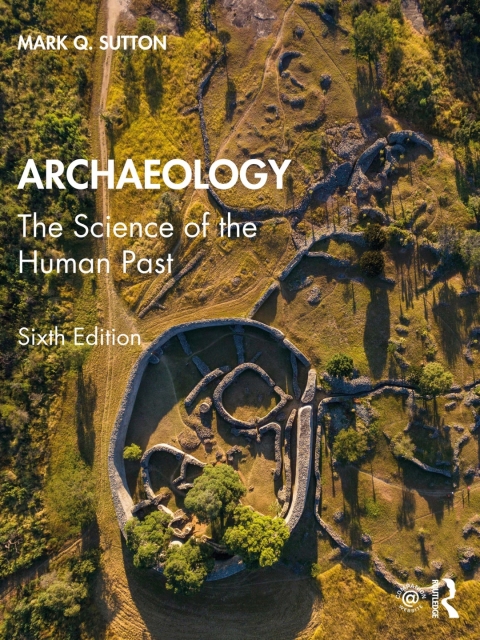Description
Efnisyfirlit
- Half Title
- Title Page
- Copyright Page
- Brief Contents
- Contents
- Acknowledgments
- About the Author
- To the Instructor
- To the Student
- part I What is Archaeology?
- chapter 1 The Science of Archaeology
- What Is Archaeology?
- Archaeology and Anthropology
- Archaeology and the Other Sciences
- The Basic Goals of Archaeology
- The Branches of Archaeology
- Prehistoric Archaeology
- Historical Archaeology
- Highlight 1.1 The Archaeology of Enslaved Africans in the New World
- Classical Archaeology
- Maritime Archaeology
- Highlight 1.2 The Mary Rose
- Highlight 1.3 An Ancient Boat Comes to Life
- Public Archaeology
- Key Concepts in Archaeology
- The Archaeological Record
- Cultural Deposition, Stratigraphy, and Dating
- Archaeological Cultures
- Archaeology as Science
- The Structure of Scientific Knowledge
- The Scientific Method
- Research Design
- Pseudoscience
- Frauds
- Archaeology and Prehistory
- The Importance of Archaeology
- Chapter Summary
- Key Concepts
- Suggested Readings
- chapter 2 Background of Archaeology
- Ancient Archaeology
- Antiquarians
- The Discovery of a Prehistoric Past
- The Classical States
- Highlight 2.1 The Buried Cities Below Vesuvius
- The Emergence of Professional Archaeology
- A Historical Approach
- Unilinear Cultural Evolution
- Diffusion as an Early Explanatory Model
- Improving Field Methods
- Developing the Outline of World Prehistory
- Prehistory of the Americas
- Highlight 2.2 The Moundbuilders
- Prehistory of Sub-Saharan Africa
- Prehistory of Asia and Oceania
- Political Influences on the History of Archaeology
- Colonialism
- Highlight 2.3 Great Zimbabwe
- Nationalism
- General Biases
- Chapter Summary
- Key Concepts
- Suggested Readings
- chapter 3 The Development of Contemporary Archaeology
- Archaeology After World War II
- The Rise of Scientific Archaeology
- Research Design in Archaeology
- Middle-Range Theory
- Highlight 3.1 Ethnoarchaeology Among the Aka of Central Africa
- Highlight 3.2 Experimental Archaeology: Building Models to Test the Hunting-Scavenging Debate
- Cultural Materialism
- Expanding Theoretical Horizons
- Gender and the Past
- The Archaeology of Power
- Behavioral Archaeology
- Evolutionary Archaeology
- Cognitive Archaeology
- Indigenous Archaeology
- Archaeological Frontiers
- Highlight 3.3 Exoarchaeology
- Careers in Archaeology
- Becoming an Archaeologist
- Chapter Summary
- Key Concepts
- Suggested Readings
- part II Obtaining Information About the Past
- chapter 4 The Archaeological Record
- Archaeological Sites
- Types of Sites
- Highlight 4.1 Ancient Footprints at Laetoli
- Site Deposits
- Highlight 4.2 Tell es-Safi: Goliath’s Hometown
- Site Formation and Transformation
- Geological Processes
- Taphonomic Processes
- Bioturbation
- Human Action
- Preservation
- Preservation Conditions
- Preservation and the Environment
- Material Remains
- Artifacts
- Ecofacts
- Features
- Architecture
- Highlight 4.3 How Were the Egyptian Pyramids Built?
- Human Remains
- Recognizing and Recovering Evidence
- Ongoing Impacts on the Archaeological Record
- Highlight 4.4 The Looting of Angkor Wat
- Chapter Summary
- Key Concepts
- Suggested Readings
- chapter 5 Conducting Fieldwork
- Finding Sites
- Accidental Discoveries
- Project-Related Discoveries
- Highlight 5.1 The Discovery of Lascaux
- Conducting Archaeological Surveys
- Background Studies
- Remote Sensing Techniques for Finding Sites
- Highlight 5.2 Rediscovering Maya Cities With LiDAR
- Sampling
- Recording Sites
- Excavating Sites
- Mapping the Site
- Deciding Where to Dig
- Digging
- Recovering and Cataloging Data
- Working With Specialists
- Practical Aspects of Fieldwork
- Funding and Staffing
- Curation
- Occupational Hazards in Archaeology
- Ethics in Archaeological Fieldwork
- Highlight 5.3 Scandal! Planting Artifacts in Japan
- Legal Issues
- Humanistic Issues
- Professional Obligations
- Chapter Summary
- Key Concepts
- Suggested Readings
- chapter 6 Classification and Analysis of Artifacts
- Classification and Typology
- Attributes
- Temporal Types
- Assemblage Types
- Classifying Types of Artifacts
- Stone
- Ceramics
- Metal
- Glass
- Highlight 6.1 Historical Material Culture: A View From Chinatown in Riverside, California
- Shell and Bone
- Highlight 6.2 The Flutes of Jiahu
- Perishables
- Analyzing Artifacts
- Use-Wear Analysis
- Geochemical Sourcing
- Residue Analysis
- DNA Analysis
- Chapter Summary
- Key Concepts
- Suggested Readings
- chapter 7 Determining Time
- What Is So Important About Time?
- Older or Younger? Relative Dating in Archaeology
- Stratigraphy and Superposition
- Index Fossils and Biostratigraphy
- Temporal Types
- Seriation
- Fluorine, Uranium, and Nitrogen (FUN) Dating
- Real Time: Absolute Dating
- Dendrochronology
- Radiocarbon Dating
- Highlight 7.1 Dating the Shroud of Turin
- Potassium-Argon Dating
- Uranium-Thorium Dating
- Obsidian Dating
- Other Absolute Dating Methods
- Chapter Summary
- Key Concepts
- Suggested Readings
- chapter 8 Bioarchaeology: Human Remains
- What Is Bioarchaeology?
- Ethics and Politics
- The Funerary System
- The Funerary System I: Pretreatment of the Living
- The Funerary System II: The Mortuary Process
- Highlight 8.1 The Ice Princess
- Highlight 8.2 The Roman Mummies of Tell El-Hibeh
- Highlight 8.3 KV-5: The Mega Tomb for the Sons of Rameses the Great
- The Funerary System III: Commemorative Behavior
- Skeletal Remains
- The Human Skeleton
- Estimating Sex
- Estimating Age
- Estimating Stature
- Estimating Ancestry
- Soft-Tissue Evidence
- Investigating Health and Nutrition
- Pathology and Trauma
- Highlight 8.4 Ancient Cannibals?
- Chemical Analyses
- Stable Isotope Analysis
- Analysis of Ancient DNA
- What People Looked Like: Soft-Tissue Reconstruction From Skeletal Data
- Paleodemography
- Constructing a Biocultural Profile
- Tracking Skeletal Variability in Early Human Ancestors
- Contemporary Forensics
- Chapter Summary
- Key Concepts
- Suggested Readings
- part III Interpreting the Past
- chapter 9 Environment and Adaptation
- The Environment
- Highlight 9.1 Rapa Nui’s Ecological Disaster
- Environmental Archaeology
- Reconstructing Past Landforms
- Reconstructing Past Plants and Animals
- Reconstructing Past Climate
- Human Biological Adaptation
- Evolutionary Ecology
- Optimization Models
- Human Cultural Adaptation
- Highlight 9.2 Island Geography and Subsistence Practices in Polynesia
- Controlling the Environment
- Domestication and the Agricultural Revolution
- Highlight 9.3 Detecting Animal Domestication
- Chapter Summary
- Key Concepts
- Suggested Readings
- chapter 10 Understanding Past Settlement and Subsistence
- Where People Lived: Past Settlement Systems
- Settlement Archaeology
- Understanding Site Components
- Analyzing Populations
- Catchment Analysis
- The Interplay Between Settlement and Subsistence
- How People Made a Living: Subsistence
- Highlight 10.1 The Impacts of Agriculture and Urbanization on Health and Nutrition
- The Four Primary Subsistence Systems
- Evidence of Subsistence
- Subsistence Technology and Organization
- Highlight 10.2 Diet and Cuisine at Lake Cahuilla
- Recovery and Identification of Ecofactual Evidence
- Quantifying Ecofactual Remains
- Chapter Summary
- Key Concepts
- Suggested Readings
- chapter 11 Interpreting Past Cultural Systems
- How Archaeology Can Answer Anthropological Questions
- Social Archaeology
- Cognitive Archaeology
- Interpreting Past Social Structures
- Kinship
- Social Stratification
- The Archaeology of Gender
- The Archaeology of Ethnicity
- Interpreting Past Political Organization
- Four Types of Political Organization
- Some Theories of the Origin of States
- Interpreting Past Belief Systems
- Religious Organization and Expression
- Cosmology, Philosophy, and Oral Tradition
- Highlight 11.1 The Terracotta Army
- Highlight 11.2 Archaeoastronomy
- Iconography, Art, and Expression
- Highlight 11.3 Art and Archaeology in Africa
- Remembering the Individual
- Chapter Summary
- Key Concepts
- Suggested Readings
- chapter 12 Understanding Change
- The Archaeology of Change
- A Systems Approach
- Evolutionary Approaches
- Invention and Diffusion
- Social and Political Movements
- Migrations and Diasporas
- Highlight 12.1 Archaeology of the Proto-Polynesian
- Interpreting Evidence of Change
- Reconstructing Events
- Reconstructing Patterns and Trends
- Cultural Contact and Conflict
- The Archaeology of Trade
- The Archaeology of Warfare
- Highlight 12.2 Archaeology of the Silk Road: Ancient Mummies of the Tarim Basin
- Highlight 12.3 Thermopylae, 480 BCE
- Chapter Summary
- Key Concepts
- Suggested Readings
- part IV Public Archaeology
- chapter 13 Cultural Resource Management
- The Impact of Population Growth and Development on the Archaeological Record
- The Field of Cultural Resource Management
- Antiquities Legislation in the United States
- The National Historic Preservation Act
- Compliance Archaeology
- The Archaeological Resources Protection Act
- The Native American Graves Protection and Repatriation Act
- Antiquities Legislation Around the World
- Highlight 13.1 Preserving Abu Simbel
- Site Preservation and Restoration
- The Role of Public Education in Archaeological Preservation
- Cultural Resource Management Among Traditional Peoples
- Archaeology and Ethics
- Highlight 13.2 Heritage Management in Australia
- Chapter Summary
- Key Concepts
- Suggested Readings
- chapter 14 Archaeology in Today’s World
- Archaeology Today
- Archaeology and Politics
- Who Owns the Past?
- Highlight 14.1 Native Americans and Archaeologists in the United States
- Learning From the Past: Applying Archaeology to Contemporary Problems
- Highlight 14.2 The Ancient Maya and the Rain Forest
- Archaeology and Information Technology
- Archaeology, Mass Media, and Public Perception
- So What? The Significance of Archaeology
- Chapter Summary
- Suggested Readings
- Glossary
- References
- Index








Reviews
There are no reviews yet.